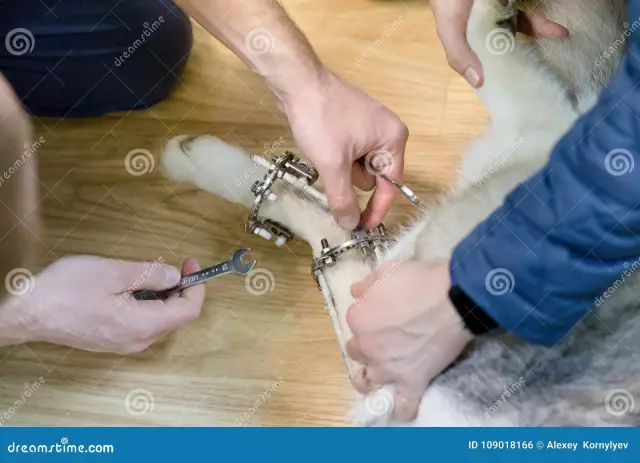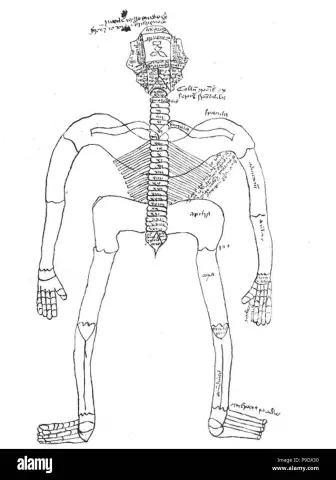- Author Rachel Wainwright [email protected].
- Public 2023-12-15 07:39.
- Last modified 2025-11-02 20:14.
Anatomical apparatus II
Anatomical apparatus II (apparatus) - a functional association of different in structure and origin of individual organs or systems of the body.
The following types of devices are distinguished:
- Accommodating eyes - anatomical formations that provide accommodation for the eye; includes the lens, ciliary girdle and ciliary muscle;
- Articulating - organs that provide the formation of speech sounds; includes teeth, vocal apparatus, muscles of the tongue, pharynx, lips, soft palate, lower jaw and cheeks, etc.;
- Vestibular - the peripheral part of the vestibular analyzer, which is located in the inner ear; provides the perception of linear and angular accelerations; consists of three semicircular ducts and sacs of the vestibule;
- Oculomotor - the organs that ensure the movement of the eyeball; consists of six external eye muscles (in humans);
- Voice - bodies involved in voice formation; includes the larynx (main), pharynx, diaphragm, bronchial tree, oral cavity and nasal cavity with additional air sinuses;
- Movement (synonym: locomotor apparatus) - bones, joints between them and skeletal muscles;
- Respiratory (synonyms: respiratory organs, respiratory organs, respiratory system) - organs that provide gas exchange between the inhaled air with blood, warming, humidifying and purifying the inhaled air from dust particles;
- Sound-perceiving - the part of the auditory analyzer that corresponds to the spiral organ;
- Sound-conducting - organs that ensure the transmission of sound vibrations from the environment to the receptor cells of the spiral organ; includes the tympanic membrane with a chain of auditory ossicles, external auditory canal, auricle, Eustachian tube, auditory muscles, cochlear duct, cells and a cave of the mastoid process of the temporal bone;
- Cochlear (anat. Cochlea - snail) - part of the inner ear; includes a cochlea with a sound-perceiving apparatus located in it;
- Genitourinary (synonym: genitourinary system) - genitals and urinary organs;
- Otolithic - part of the vestibular apparatus; includes uterine spot, pouch spot and statoliths;
- Digestive (synonym: digestive system) - organs that ensure the processing of food, the absorption of its constituents and the release of undigested residues;
- Lacrimal (synonym: lacrimal organs) - organs that ensure the production and removal of lacrimal fluid; includes the lacrimal tubules, lacrimal gland, nasolacrimal duct, lacrimal sac.
Found a mistake in the text? Select it and press Ctrl + Enter.






